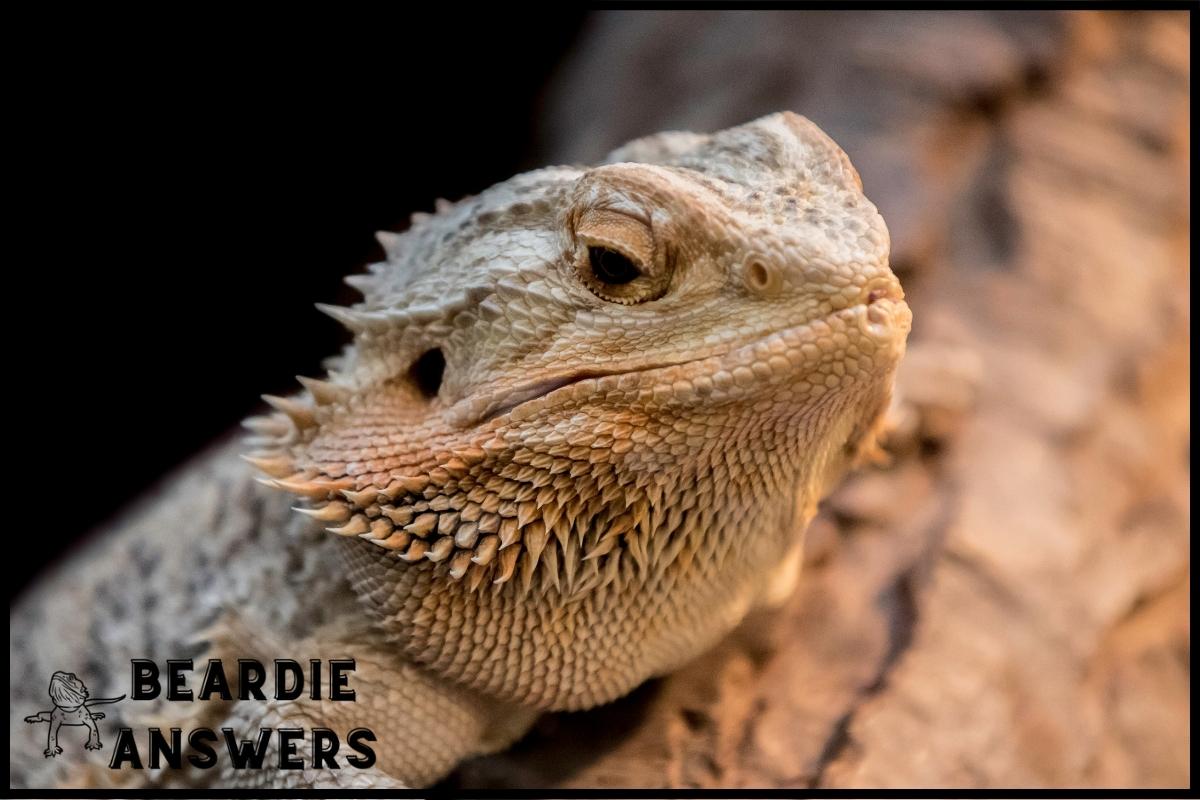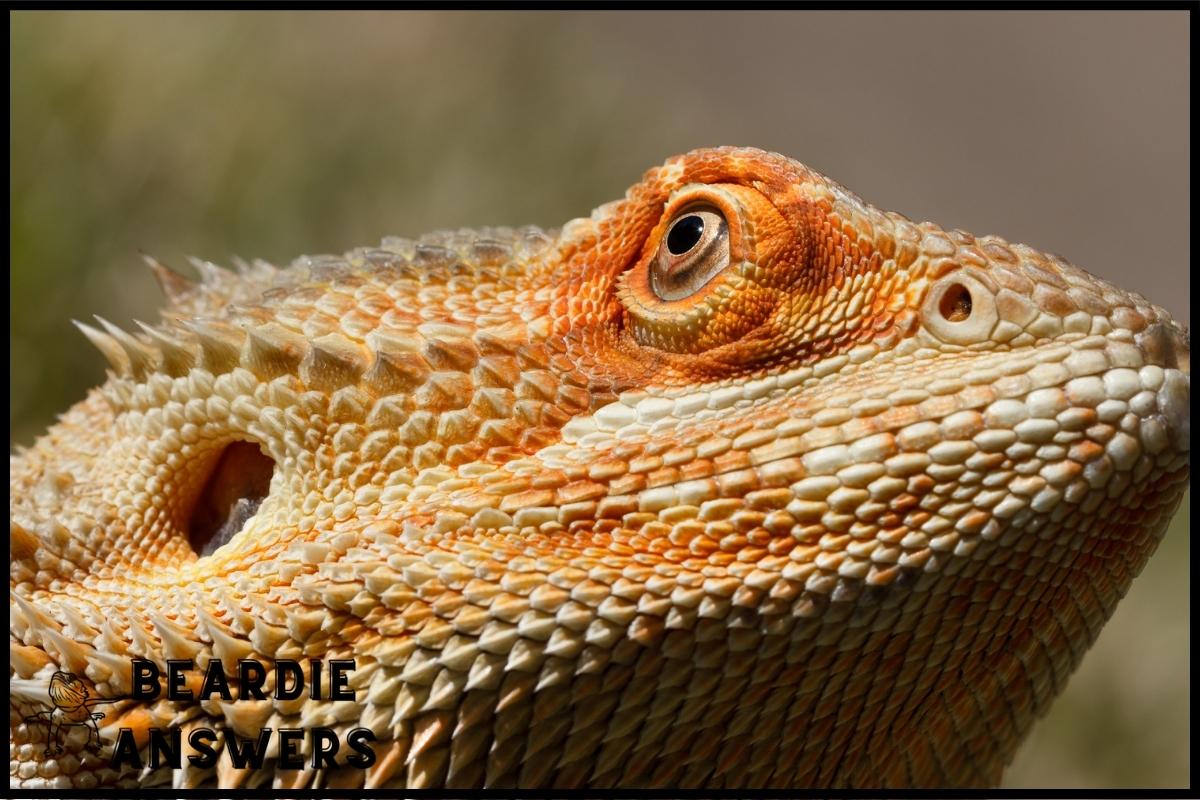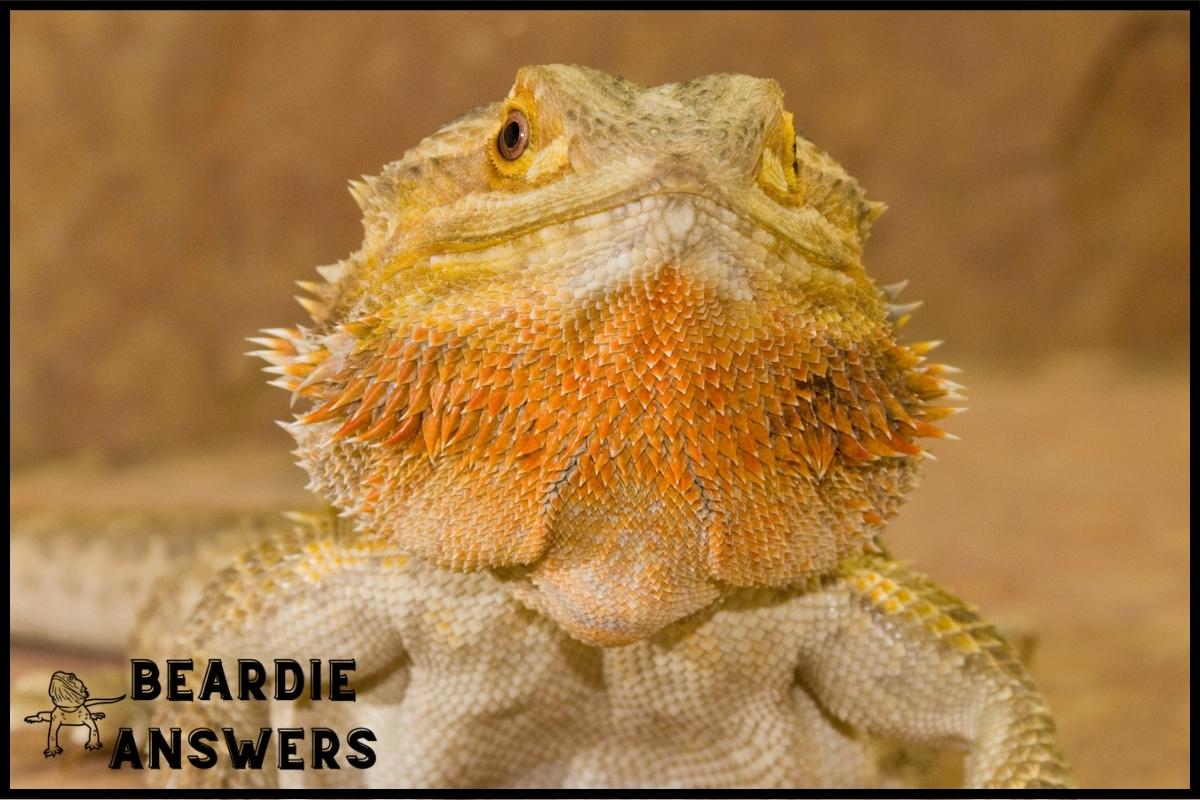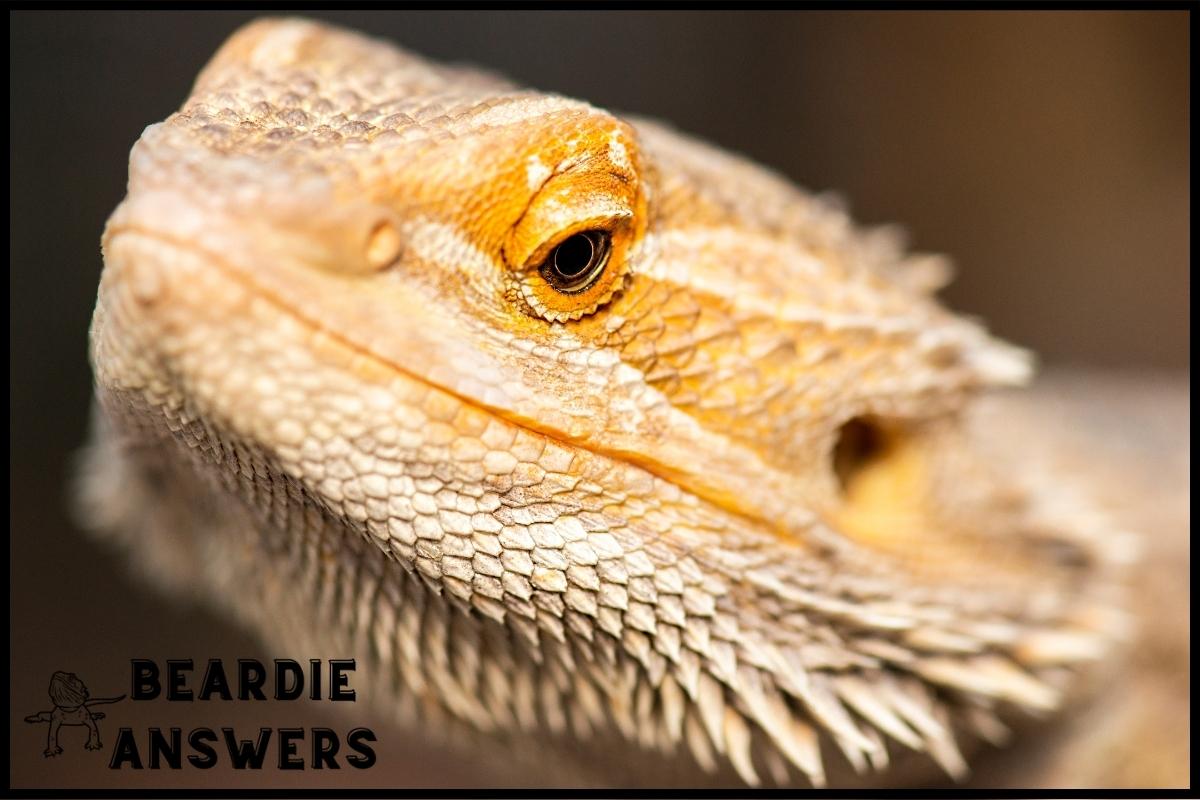[su_note note_color=”#eee”]
Bearded dragons are relatively easy to care for as long as their basic needs are met. They require a suitable tank with proper heating and lighting, a varied diet of insects and vegetables, and regular cleaning of their tank. Additionally, they need social interaction and enrichment to keep them healthy and happy.[/su_note]
Bearded dragons are a popular choice for pet owners who want an exotic-looking reptile. Although they may look intimidating, these lizards are actually quite easy to take care of!
As long as their basic needs are met, bearded dragon owners won’t have too much trouble keeping their scaly friends happy and healthy.
In this article, we’ll discuss why bearded dragons make great pets and how you can easily provide them with the care they need.
What You'll Learn
Bearded Dragons: A Unique Reptile
Bearded dragons are an incredibly unique reptile species, making them a popular choice for pet owners. With their spines and vibrant coloring these lizards often make good conversation pieces when visitors come over.
But before you decide to bring one home there are some key characteristics that you will need to know about in order to properly care for your new companion.
When it comes to handling bearded dragons, many people find them very docile creatures which makes them great for beginner reptile keepers. They don’t require any special skills or expertise to handle as they usually stay calm and aren’t aggressive towards humans.
In terms of lighting needs, they do best with UVB light during the day and infrared heat lamps at night; this helps recreate their natural environment while also providing optimal health benefits. Additionally, these animals shed regularly so it is important to monitor their shedding cycles and help remove old skin if needed.
Lastly, temperature control is vital when caring for bearded dragons as they can only thrive within specific ranges; thermostats should be used along with thermometers in order to maintain consistent temperatures throughout the enclosure size.
Housing Requirements
For a bearded dragon to be healthy and happy, their housing needs must be met. The key components are having the correct lighting setup, temperature control, substrate choice, enclosure size, and humidity levels.
A critical aspect of creating an ideal environment is providing UVB light as they need it for Vitamin D3 synthesis; without this, long-term health conditions can arise. Quality bulbs should be replaced every 6 months or so to ensure that your pet receives adequate exposure to the right wavelengths of light.
Additionally, temperatures in both basking spots and cool areas within the vivarium should be monitored with thermometers and regulated appropriately using heat lamps or ceramic heating elements. Substrate choices vary depending on the age of the dragon; adults require loose substrates like sand while younger ones may benefit from paper towels until they reach a certain size. Enclosure sizes will depend on how many dragons you own but typically between 20-60 gallons per adult is recommended. Lastly, humidity levels should stay around 40%-50%, which can usually be achieved by misting once or twice daily – always make sure that there’s proper ventilation though!
A balanced diet and nutrition plan is essential for keeping a captive bearded dragon’s health in check.
Diet And Nutrition
Protein sources for bearded dragons are typically live insects, such as crickets and mealworms. It’s important to supplement their diet with calcium and vitamin D3 to make sure they’re getting all their nutrients. Veggies and fruits should also be given to them in moderation, as part of a balanced diet.
Protein Sources
Bearded dragons need a variety of protein sources in their diet to stay healthy, so it’s important for owners to provide enrichment activities and introduce them to different food items.
Insects like mealworms, crickets, cockroaches, silk worms, etc., should make up the bulk of their diet as they are packed with essential vitamins and minerals.
Supplementing their diets with other proteins such as fish or small amounts of lean meats can also be beneficial but should not replace insects entirely.
Variety is key when feeding bearded dragons since they need the right balance of nutrients to remain healthy; the same foods day after day will leave them nutritionally deficient.
Ultimately, providing a well-rounded diet full of fresh produce and quality insects along with vitamin supplements is crucial for keeping your beloved pet happy and healthy!
Supplements
In addition to providing variety, it’s also important that bearded dragon owners consider supplementing their pet’s diet with vitamins and minerals.
Supplement types such as calcium, multivitamins, and vitamin D3 are all essential for keeping their bones strong and helping them absorb nutrients properly.
They should be given at least once a week during feedings while using handling techniques like tongs or tweezers so they don’t get too frightened by being touched directly.
Environmental enrichment activities can also help keep them healthy; rotating different food sources on feeding days is an excellent way to give them the nutrition they need without getting bored of eating the same things over and over again.
With proper supplementation and environmental stimulation, your beardie will stay happy and healthy!
Veggies & Fruits
When it comes to diet and nutrition for bearded dragons, veggies and fruits are an essential part of their daily routine. To keep your beardie healthy, you’ll need to provide them with a variety of vegetables like kale, collard greens, squash, carrots or bell peppers. Fruits should also be given in moderation; some good choices include apples, pears, strawberries and blueberries.
Foraging habits can be encouraged by providing plants within the enclosure so they have something to explore while feeding times should generally happen twice per day when they’re most active.
The size of the enclosure will ultimately determine how much food is needed since larger enclosures require more than smaller ones do.
With proper care and attention to dietary needs, you can ensure that your reptilian friend stays happy and healthy!
Health And Hygiene
Good nutrition is vital to a bearded dragon’s health, but it’s not the only factor that needs to be considered. Health and hygiene are important parts of keeping a healthy beardie. Proper bathing and shedding techniques, along with temperature regulation, heating, and humidity management will help keep your pet happy and safe.
Bathing: Bearded dragons need weekly baths in shallow warm water. This helps them stay clean while also encouraging them to shed their skin properly. Make sure to use lukewarm water (no cold or hot) so as not to shock them.
Shedding: Shedding occurs naturally for beardies when they reach certain stages of growth. The bathwater can help loosen the old skin which should come off easily within a few days after the bath. If you notice any pieces of skin still attached after two weeks then gently remove it using wet cotton swabs or tweezers dipped in warm water.
Temperature & Heating: Keeping the proper temperature range is essential for bearded dragons since this helps regulate their metabolism and digestion processes. During the day time hours, temperatures should typically range from 85-90 degrees Fahrenheit with basking spots being at least 95-105F. At night time temperatures should drop down around 70F however some may prefer cooler temperatures like 65F depending on their natural habitat preferences.
Humidity Management: Humidity levels should remain low inside the enclosure – usually between 20% – 40%. Too much moisture will cause mold and bacteria growth which can lead to respiratory issues for your pet reptile friend! You can monitor the humidity levels by using digital hygrometers available at most pet stores or online retailers. A periodic misting of water inside their enclosure will provide additional hydration without overdoing it with moisture buildup in their home environment.
By maintaining these necessary health and hygiene habits, you’ll have a healthier bearded dragon who is ready to socialize with other reptiles or humans alike!
Socialization
Bearded dragons are social animals who can live in groups, although they must be carefully monitored to prevent fighting. Creating a dominance structure amongst the group is essential for their stress management and overall well-being.
Handling Tips:
- Support under abdomen
- Avoid sudden movements
- Handle gently but confidently
Stress Management:
- Monitor aggression levels
- Provide enrichment items like plants/branches
- Introduce new animals slowly and one at a time
Enclosure Size:
- 6-10 sq ft per animal
- No tall furniture blocking UVB light access
- Offer multiple basking spots & hideouts
Socialization provides many benefits for bearded dragons, from improved moods to better health outcomes. However, it should always be done with caution; too much handling or overcrowding may lead to overwhelming stress which could cause injury or death.
To ensure smooth social interactions between your pet(s), proper enclosures sizes and adequate environmental stimulation are key components of success.
Behavioral Considerations
It is important to consider the behavioral needs of your bearded dragon when caring for them.
Handling protocol should be established early on in order to keep them comfortable with being handled, as they can get startled easily. They may need some time to adjust to their new environment before they are ready to be held and interacted with regularly.
Heat regulation and lighting adjustment also play major roles in a bearded dragon’s health and wellbeing. The temperature must remain between 90-105 degrees Fahrenheit during the day and around 75-85 degrees at night.
Their habitat must also have adequate UVB light sources that mimic natural daylight hours, typically 12-14 hours per day.
Shedding process and stress relief should also be monitored closely, as these are indicators of overall health. When shedding occurs, provide plenty of humidity for your pet by misting or providing moist hideouts so that old skin comes off easier without damaging it.
Stress relief can come from regular handling sessions or using toys such as hammocks or ladders that allow the lizard an escape route if needed.
Overall, proper care requires meeting all basic needs while understanding how each individual reacts differently to external stimuli. With patience and consistency, you will soon develop a routine that works best for both you and your beloved pet!
Conclusion
Bearded dragons can make great companions for those looking for an exotic pet that is relatively easy to care for. With proper housing, a healthy diet, regular hygiene and socialization, these creatures can live long and happy lives with their owners. The process of caring for them may seem daunting at first but it becomes second nature once the basics are understood.
The bearded dragon is symbolic of taking on a new challenge in life. Caring for something so delicate yet resilient teaches us about responsibility, selflessness and patience. They also remind us to enjoy the little things in life such as basking in the sun or snuggling up with you during movie night.
Overall, having a reptilian companion around your home brings joy and satisfaction knowing that you are providing love and support to another living being while they bring light into yours.
For anyone considering adding one of these majestic creatures to their family, now would be a great time!

Hi! My name is Bryan, I am the “one behind the words” here are BeardieAnswers.com. I believe that providing quality care and nutrition is the best way to ensure the health of your pet. Every beardie is special and deserves the best care and attention. If you have questions about your bearded dragon, please don’t hesitate to ask! View My Full Author Page




